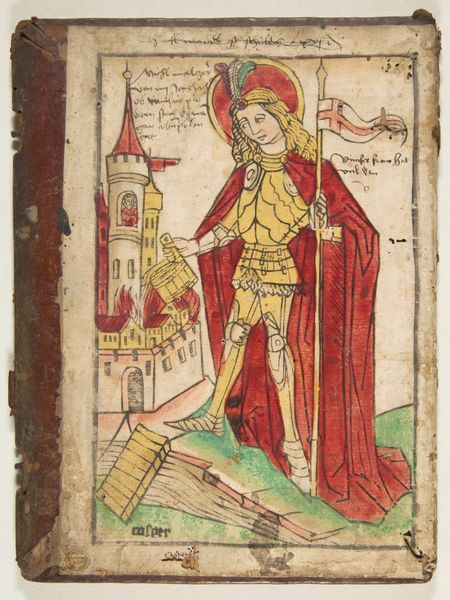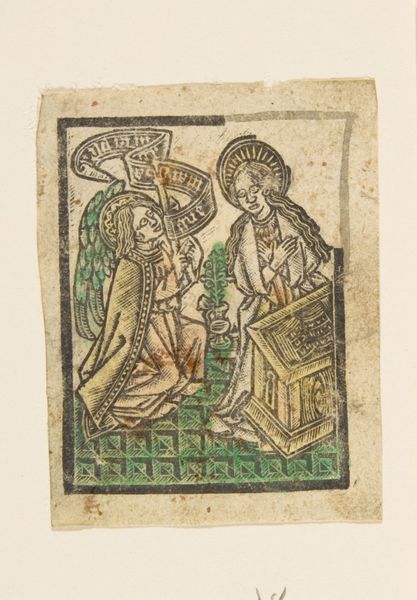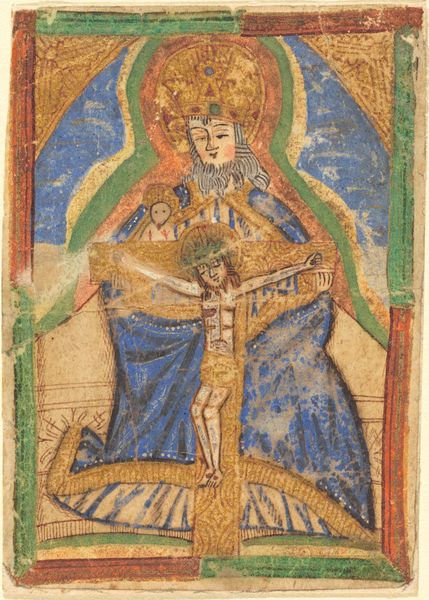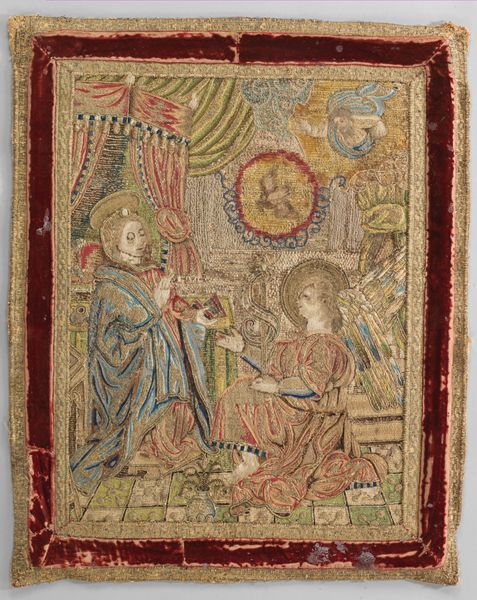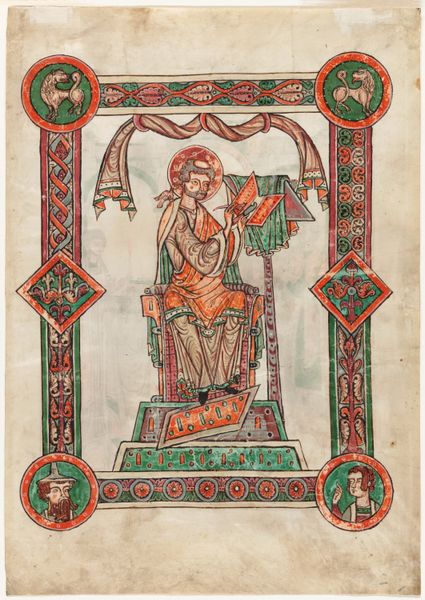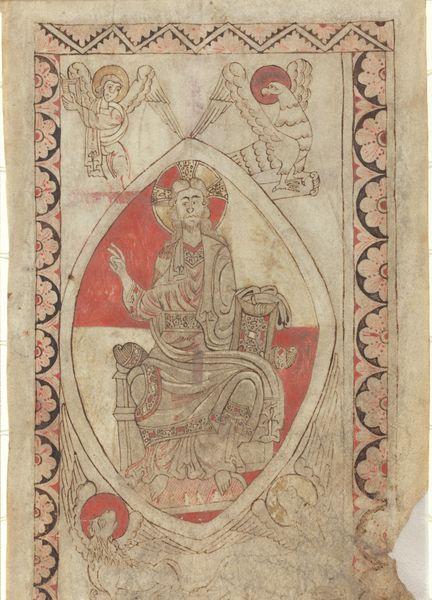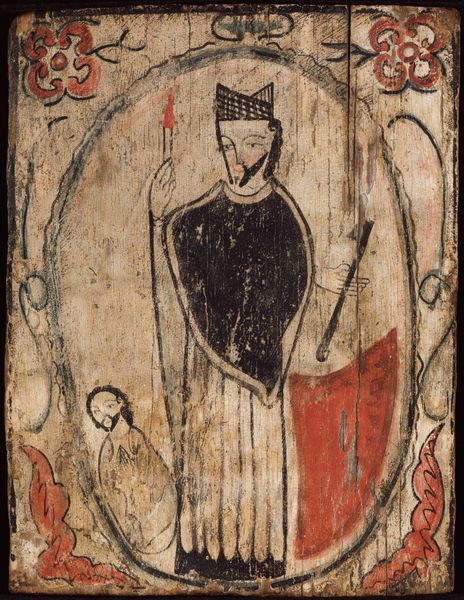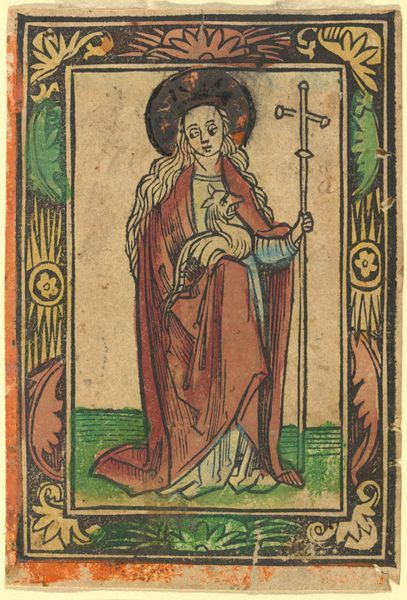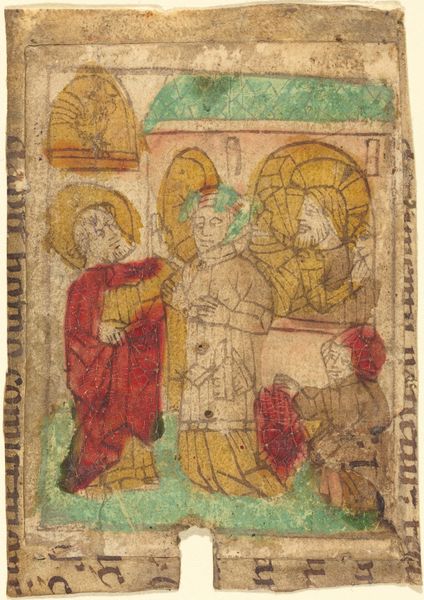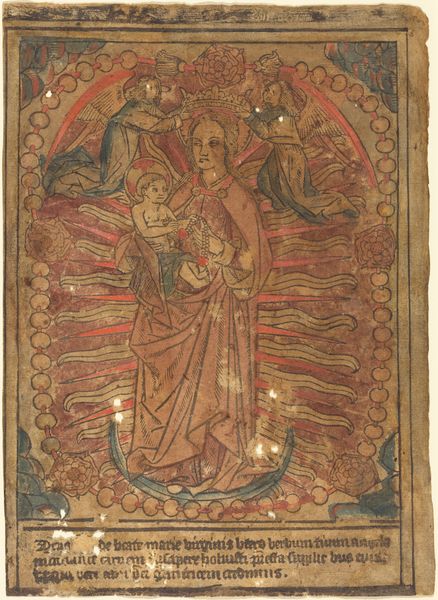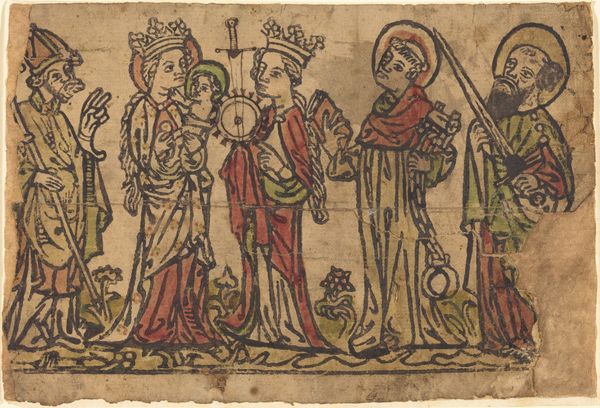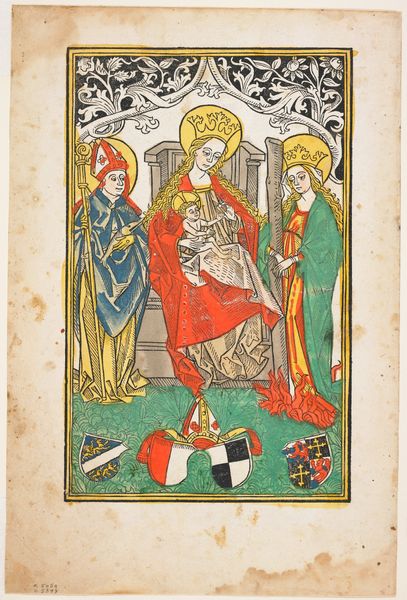
drawing, coloured-pencil, print
#
drawing
#
coloured-pencil
#
medieval
#
water colours
#
narrative-art
# print
#
figuration
#
coloured pencil
#
history-painting
#
miniature
Dimensions: 9-3/4 x 6-1/4 in.; 10-3/4 x 7-13/16 in.
Copyright: Public Domain
Casper created "Saint Wolfgang" around the late 15th century with metalpoint, pen and ink, and watercolor on paper. Consider how Casper, working within the conventions of late medieval art, presents Saint Wolfgang, a prominent figure in the Catholic Church. During this period, the Church wielded immense power, influencing not only spiritual life but also politics and social structures. Saint Wolfgang, known for his role as a bishop and his commitment to monastic reform, embodies the ideals of religious authority and piety. The imagery associated with him, such as the church model and the bishop's staff, signifies his position within the ecclesiastical hierarchy. Reflect on how Casper’s portrayal of Saint Wolfgang both upholds traditional representations and conveys a sense of the saint's individual character. How does the artwork invite viewers to contemplate the intersection of religious authority, personal devotion, and artistic expression in the late Middle Ages?
Comments
No comments
Be the first to comment and join the conversation on the ultimate creative platform.
